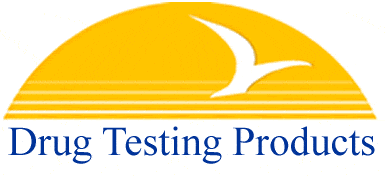
|
Home
|
View Cart |
Shipping | Privacy |
Drug Testing Help |
|
|
|
|
||||
 |
|
|
drug test * drug testing * employee drug testing * urine test * marijuana drug test * urine drug test * hair drug test * drug test * drug test kit * saliva drug test * panel drug testing | ||
|
|
|
||||||
Drug Testing Data – Case AnalysisThe frequently repeated claim that workplace drug use costs the nation between $60 and $100 billion annually was based on a study conducted by the Research Triangle Institute (RTI) in 1982. The institute found that the average household incomes of individuals who had" ever used marijuana on a daily basis were 28 percent lower than the incomes of people who had not used marijuana daily. Researchers then extended that finding to all households in the United States and estimated a loss of income of $26 billion due to marijuana use. A final figure of $60 to $100 billion came from the inclusion of drug-related crime and accidents, adjusted for inflation and population growth between 1982 and 1989. The problem with the RTI data, however, was the information that reviewers often do not mention. The RTI study also showed that there was no significant difference in household income between current users of marijuana (or heroin or cocaine) and nonusers. In 1990, critics questioned Henrick Harwood, director of the RTI study, about these data. Did they imply that drug use leads to no economic "loss" at all? he was asked. Harwood, who had in the meantime become Director of Drug Policy for the Bush White House, replied, "You would be on safe ground saying that. Further data on this issue come from an in-house study of drug use among employees at the Utah Power and Light Company (UPL). That study found that UPL actually spent $215 less per year in health insurance benefits on employees who were known to use drugs than on nonusers. Given the popularity of drug testing in the workplace and the substantial amounts of money spent on such programs, it is interesting to note how few peer-reviewed studies there are on the effects of drug use on employee behavior. A "peer-reviewed" study is one that has been read and analyzed by other experts in the same field to be sure that it is scientifically sound. One such study followed 180 hospital employees who had been given drug tests prior to their employment. Twenty-two of the employees (12 percent) tested positive for drugs and 158 (88 percent) did not. Researchers found no difference in supervisor evaluations or other measures of job proficiency between those who had tested positive and those who had not. The number of employees who were fired during the study included eleven of the negatives and none of the positives. Researchers concluded that the "study did not find a relation between drug use and job performance." A later study of 2,537 postal employees found somewhat different results. Researchers found preemployment drug testing results to be "associated with adverse employment outcomes" such as accidents, injuries, and absences. They concluded, however, that the level of risk from hiring drug users was "much less than previously estimated." The difference in the job performances of drug users and nonusers, they said, "may not justify the varied costs involved in establishing a drug-screening program. " The results of one of the most carefully designed studies on this issue was reported in late 1995. Scott Macdonald of the Addiction Research Foundation in London, Ontario, conducted a multivariate analysis of factors affecting workplace injuries. A multivariate analysis attempts to sort out the contribution of many possible factors in producing some given outcome, in this case, accidents in the workplace. Macdonald found that the use of illicit drugs ranked last among twelve variables in contributing to workplace accidents. He concluded that illicit drug use seriously affected the job performances of young male workers only. "An implication of this finding," he said, "is that drug-testing is not justifiable to reduce injuries for females or older age groups. The relationship between employee morale and drug testing may also be more complex than it initially appears. Without question, most Americans and most workers are concerned about drug abuse. A majority of people approve of testing in the workplace especially if it is "someone else" being tested. But critics point out that drug testing can be a degrading experience. For example, supervisors of drug testing programs must be careful that any urine sample collected is correctly labeled to avoid mix-ups. They may insist that a neutral observer be present while a subject produces urine for a test. Having someone stand next to you while you complete this task can be an embarrassing and degrading experience. It is not clear, opponents of drug testing say, that such experiences really promote company morale.
More Sources:
| |||||||